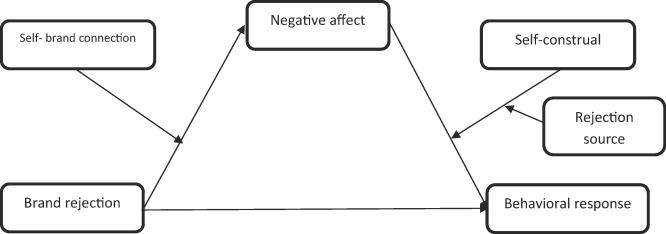
What is Brand Dilution? Signs, Causes (And How to Prevent It)
Have you ever walked into a store and felt overwhelmed by the sheer number of choices? You’re not alone! In a world where brands are constantly vying for our attention, it can be easy for a once-strong identity to become diluted amidst the noise. Brand dilution is more than just a buzzword; it’s a real challenge that can impact your business’s reputation, customer loyalty, and ultimately, your bottom line. But what exactly is brand dilution, and how can you recognize it before it’s too late? In this article, we’ll explore the signs and causes of brand dilution, as well as practical strategies to safeguard your brand’s integrity. So, if you’re ready to reclaim your brand’s power and ensure it stands out in a crowded marketplace, let’s dive in!
Understanding Brand Dilution and Its Impact
Brand dilution occurs when a brand’s value and identity weaken due to various factors, leading to a loss of customer loyalty and market position. Understanding this phenomenon is essential for any business looking to maintain its competitive edge. When a brand expands too quickly or diversifies too broadly, it risks confusing its audience and diluting the core message that initially attracted customers.
Signs of brand dilution can manifest in several ways. Here are a few key indicators to watch out for:
- Decreased customer loyalty: Long-time customers may start to stray towards competitors.
- Mixed messaging: The brand’s communication becomes inconsistent, leading to confusion about its identity.
- Negative customer feedback: A rise in complaints or negative reviews can signal that the brand is losing its touch.
- Declining sales: A noticeable drop in revenue, particularly in brand flagship products, can indicate dilution.
Several factors can contribute to this dilution, including:
- Overextension: Launching too many products or services can overwhelm customers and blur brand identity.
- Poor-quality offerings: Compromising quality in pursuit of quantity can tarnish a brand’s reputation.
- Inconsistent branding: Failing to maintain a cohesive brand image across different platforms can confuse consumers.
- Targeting the wrong audience: Misalignment between the brand’s message and its intended audience can lead to a disconnect.
To effectively prevent brand dilution, businesses must be proactive in strategizing and maintaining their brand integrity. Here are some steps to consider:
- Focus on core values: Always align new products or services with the brand’s core values and mission.
- Maintain quality: Ensure that all offerings meet the established standards of quality that originally built customer trust.
- Consistent messaging: Regularly assess marketing materials to ensure they accurately reflect the brand’s identity.
- Conduct market research: Stay in tune with customer preferences and market trends to avoid missteps in brand strategy.
To further illustrate the impact of brand dilution, consider the following table that highlights examples of brands that faced dilution and their subsequent strategies for recovery:
| Brand | Issue Faced | Recovery Strategy |
|---|---|---|
| Gap | Overexpansion with too many product lines | Streamlining collections to focus on core products |
| Coca-Cola | Confusion from product variety (New Coke) | Reintroduced original formula after backlash |
| Blackberry | Failure to innovate and compete with competitors | Refocused on niche markets with new security features |
brand dilution can have a lasting impact on a company’s reputation and profitability. By remaining vigilant about their branding strategies and staying connected with customer needs, businesses can prevent dilution and foster a strong, recognizable brand that resonates with audiences.

Identifying the Signs of Brand Dilution
Brand dilution can creep up on even the most established names in the market. Recognizing the early signs is crucial to preserving the strength of your brand. Here are some key indicators that suggest your brand might be experiencing dilution:
- Inconsistent Messaging: If your brand’s message varies across different channels or is unclear, it can confuse consumers about what your brand stands for.
- Decreased Customer Loyalty: A noticeable drop in repeat customers or increased churn rates can indicate that your brand isn’t resonating like it used to.
- Negative Perception: If customers associate your brand with low quality or cheap alternatives, this perception can significantly dilute your brand’s value.
- Product Overextension: Offering too many products or services can lead to a fragmented brand identity, making it difficult for consumers to understand what your brand truly represents.
- Increased Competition: If competitors offer better quality or a clearer value proposition, your brand may lose its edge in the marketplace.
- Social Media Backlash: A rise in negative comments or reviews on social media can signal that your brand is losing favor with its audience.
One effective way to monitor for these signs is to regularly evaluate your brand’s performance through customer feedback and market research. You might also consider creating a simple feedback loop with your customers, where they can share their thoughts on your brand’s evolution.
To further illustrate these signs, consider the following table that outlines potential impacts of brand dilution:
| Sign | Potential Impact |
|---|---|
| Inconsistent Messaging | Confusion among consumers |
| Decreased Customer Loyalty | Lower sales and market share |
| Negative Perception | Damaged brand reputation |
| Product Overextension | Weakening brand identity |
| Increased Competition | Loss of competitive advantage |
By keeping an eye out for these signs, you can take proactive measures to prevent brand dilution. Implementing a consistent brand strategy and engaging with your audience regularly are effective ways to maintain brand strength.
Ultimately, recognizing brand dilution early allows businesses to adapt and evolve, ensuring that they remain relevant and respected in their industry. So, stay vigilant and prioritize your brand’s integrity to continue building lasting relationships with your customers.
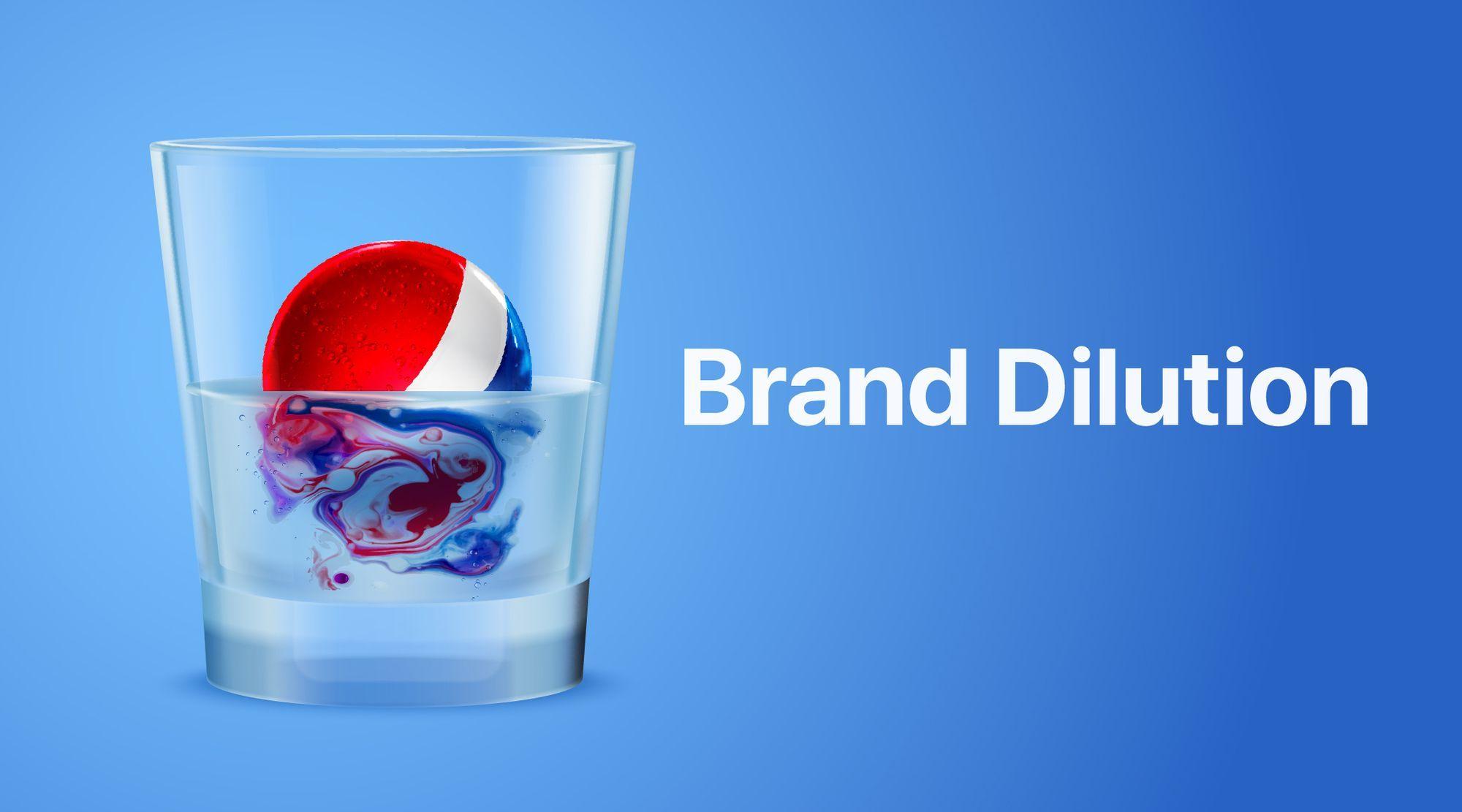
Exploring the Common Causes of Brand Dilution
When a brand loses its distinctiveness and clarity, it can lead to a phenomenon known as brand dilution. Understanding the common causes is essential for any business aiming to maintain a strong market presence.
One of the primary factors contributing to brand dilution is overextension. When a brand attempts to expand its product line too quickly or enters unrelated markets, it risks confusing consumers about its core identity. For instance, a luxury brand that suddenly ventures into budget-friendly products may alienate its existing customer base.
Another significant cause is inconsistent messaging. A brand that fails to maintain a unified voice across various platforms and marketing channels can create mixed signals. Consumers may struggle to understand what the brand stands for, leading to diminished loyalty and trust. Consistency in tone, imagery, and values is crucial to reinforce brand identity.
Poor quality control is also a major player in brand dilution. If a brand is known for high-quality products but starts to cut corners to reduce costs, it can quickly lose the trust of its consumers. A decline in product quality can tarnish a brand’s reputation, making it difficult to recover even after improvements are made.
Brand partnerships can be a double-edged sword. While collaborations can enhance visibility and reach, associating with a brand that doesn’t align with your values can confuse consumers. If customers perceive a partnership as compromising your brand’s integrity, it may lead to a loss of brand equity.
Lastly, negative publicity can rapidly dilute a brand’s strength. Whether due to a scandal, product recall, or poor customer service, any event that generates bad press can overshadow positive brand attributes. It’s essential for brands to have a crisis management plan to address and mitigate the impact of such events.
| Cause | Description |
|---|---|
| Overextension | Expanding product lines or markets too quickly. |
| Inconsistent Messaging | Failure to maintain a unified brand voice. |
| Poor Quality Control | Decline in product quality affecting trust. |
| Brand Partnerships | Associating with brands that misalign with your values. |
| Negative Publicity | Scandals or poor service leading to bad press. |
Addressing these causes proactively can help brands maintain their identity and prevent dilution. By understanding the intricacies of brand management, businesses can navigate potential pitfalls and foster a strong, lasting connection with their audience.
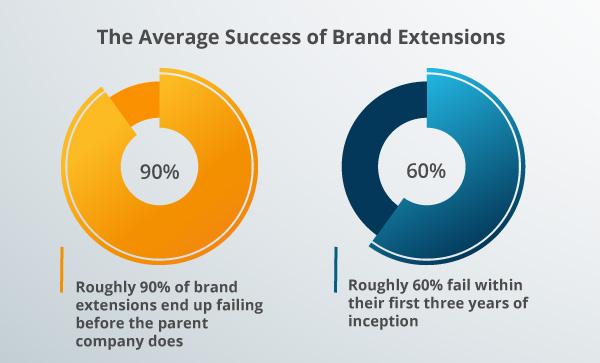
How Brand Dilution Affects Customer Perception
Brand dilution occurs when a company’s brand loses its strength, identity, or value in the eyes of consumers. This can be a slow process, often creeping in unnoticed until significant damage has been done. As a result, customer perception can shift dramatically, leading to confusion and a lack of loyalty. Understanding how this phenomenon affects customers is crucial for businesses looking to maintain their brand integrity.
One of the primary effects of brand dilution is the erosion of trust. Consumers have a natural tendency to gravitate toward brands that convey a strong identity and consistent messaging. When a brand starts to stretch itself too thin—whether by launching too many product lines or entering markets that don’t align with its core values—customers may feel that the brand is no longer focused or reliable. This inconsistency can lead to hesitation in purchasing, as consumers may question the quality of products associated with a brand that seems to be losing its way.
Additionally, brand loyalty can take a significant hit when dilution occurs. Customers often develop emotional connections to brands they feel represent their values or lifestyles. If a brand starts to dilute its message or offerings, those connections can weaken. For instance, a high-end fashion label that begins to offer lower-quality, mass-produced items might alienate its core audience, leading to a loss of dedicated customers who once championed the brand.
Customers also face confusion when brands dilute their identity. A brand that previously stood for one thing can quickly become muddled in the eyes of the consumer. This confusion can manifest in difficulty recalling what the brand represents, or worse, it can lead to misconceptions about the brand’s values and mission. When customers can’t readily identify the essence of a brand, they are more likely to turn to competitors who offer clearer, more defined messages.
Moreover, brand dilution can lead to increased competition that is not always healthy. As a brand tries to diversify too much, it may inadvertently enter markets where competition is fierce. If consumers feel overwhelmed by choices or perceive alternatives as offering better value or quality, they may shift their loyalty without a second thought. This increased competition can make it challenging for the diluted brand to regain its footing.
In light of these potential pitfalls, it’s essential for brands to actively monitor their brand perception. Conducting regular customer surveys and market research can provide valuable insights into how a brand is viewed by its target audience. By doing so, companies can spot early signs of dilution and take corrective actions before it’s too late.
| Sign of Brand Dilution | Effect on Customer Perception |
|---|---|
| Inconsistent Messaging | Loss of trust and reliability |
| Overdiversification | Confusion about brand identity |
| Quality Variance | Decreased loyalty and emotional connection |
| Market Misalignment | Shift to competitors with clearer value propositions |
Ultimately, maintaining a strong brand identity is not just about the products or services offered but about fostering genuine connections with consumers. By understanding how dilution impacts customer perception, brands can take proactive steps to reinforce their identity and ensure they remain a trusted choice in the marketplace.
The Role of Consistency in Brand Strength
Consistency is the backbone of any strong brand identity. When a brand maintains a unified image, it creates a sense of reliability and trustworthiness among its audience. Think about your favorite brands—chances are, their messaging, visuals, and overall tone are strikingly similar across various platforms. This familiarity fosters a positive relationship between the brand and its customers.
One of the key aspects of consistency is visual identity. This includes everything from your logo and color scheme to typography and imagery. When these elements are consistent, it helps to establish a recognizable presence in a crowded marketplace. Brands that frequently change their visual identity risk confusing their audience and, ultimately, diluting their brand strength.
- Brand Messaging: Your brand voice and messaging should remain consistent to ensure clarity. Whether it’s through advertisements, social media posts, or customer service interactions, every touchpoint should echo the same values and tone.
- Customer Experience: Consistent customer experiences, whether online or offline, reinforce your brand’s promise. If a customer has a great experience in-store but a disappointing interaction online, it can lead to confusion and mistrust.
- Product Quality: Delivering a consistently high-quality product is vital. If customers can’t rely on the quality of your offerings, they may choose to take their business to a competitor who can.
In a world where consumers face an overwhelming number of choices, consistency serves as a guiding star. Brands that keep their messaging and execution consistent often find it easier to cut through the noise and resonate with their target audience. This consistency not only enhances recognition but also builds loyalty—consumers are more likely to return to brands they know and trust.
Moreover, consistency helps in creating an emotional connection with your audience. When customers know what to expect, they feel more comfortable engaging with your brand. A consistent emotional tone, whether it’s playful, serious, or inspirational, provides a framework within which customers can connect with your brand on a deeper level.
To illustrate the impact of consistency, consider the following table that highlights brands known for their strong, consistent identities:
| Brand | Key Consistent Element | Impact on Brand Strength |
|---|---|---|
| Apple | Minimalist Design | High recognition and loyalty |
| Coca-Cola | Red and White Color Scheme | Global brand identity |
| Nike | “Just Do It” Slogan | Strong motivational presence |
Failing to maintain consistency can lead to brand dilution, where the brand becomes less recognizable and loses its unique value proposition. This could manifest in various ways, such as mixed messaging or fluctuating product quality. To avoid this pitfall, brands must create and adhere to a comprehensive brand guideline that outlines everything from visual standards to tone of voice.
Ultimately, cannot be overstated. It serves as a foundation for building a lasting relationship with your audience, creating a reliable and trustworthy brand in the process. Prioritize consistency in every aspect of your branding efforts, and you’ll not only prevent dilution but also cultivate a robust brand that stands the test of time.

Practical Strategies to Prevent Brand Dilution
To safeguard your brand from dilution, consider implementing these practical strategies:
- Define Your Brand Identity: Ensure your brand has a clear and consistent identity. This includes your brand’s mission, vision, values, and unique selling propositions. The clearer your identity, the less likely it is to become diluted.
- Maintain Consistency Across Channels: Use the same branding elements across all platforms—this includes your logo, color palette, typography, and messaging. Consistency helps reinforce your brand identity and makes it instantly recognizable to consumers.
- Curate Product Offerings: Be selective about the products or services you offer. Expanding your portfolio too broadly can confuse consumers about what your brand stands for. Focus on your core offerings that align with your brand identity.
- Monitor Customer Feedback: Regularly solicit and analyze customer feedback. Understanding how customers perceive your brand can help identify dilution signs early. This proactive approach allows you to make necessary adjustments in real-time.
- Train Your Team: Ensure that all team members understand your brand’s values and messaging. Regular training sessions can help align everyone’s efforts, keeping the brand’s voice and image consistent across all touchpoints.
Another effective approach involves analyzing your brand’s partnerships and collaborations:
| Partnership Type | Potential Impact on Brand | Considerations |
|---|---|---|
| Celebrity Collaborations | Can enhance visibility | Ensure alignment with brand values |
| Influencer Partnerships | Broaden audience reach | Choose influencers who resonate with your brand |
| Co-Branding Initiatives | Mix up market perceptions | Maintain control over brand representation |
Lastly, always be prepared to adapt to market changes. Staying relevant is crucial to preventing brand dilution:
- Conduct Market Research: Regularly assess market trends and consumer behaviors. This insight allows you to pivot or refine your branding strategy proactively.
- Innovate Wisely: While innovation is key to growth, ensure that new products or services align with your brand’s core identity. Avoid launching offerings that stray too far from what your consumers expect.
- Limit Sub-brands: While sub-brands can be effective, they can also lead to confusion. Keep them to a minimum, and ensure they complement rather than conflict with your primary brand.
- Build a Community: Engage with your audience through social media and other platforms. A strong community can help reinforce your brand message and loyalty, making it harder for dilution to take root.

Leveraging Customer Feedback to Strengthen Your Brand
In today’s fast-paced marketplace, customer feedback serves as a vital lifeline for brands looking to maintain their identity and prevent dilution. By actively listening to their customers, brands can glean invaluable insights that help refine their offerings and enhance their messaging. This process not only reinforces customer loyalty but also fosters a deeper connection between the brand and its audience.
One effective way to gather this feedback is through surveys and polls. These tools can be implemented across various platforms, whether through email campaigns, social media, or on your website. Here are a few strategies to optimize your feedback collection:
- Keep it Simple: Design concise surveys that respect your customers’ time, focusing on key areas of interest.
- Incentivize Participation: Offer discounts or freebies in exchange for feedback, increasing the likelihood of responses.
- Act on Feedback: Regularly analyze insights and implement changes, demonstrating to customers that their opinions matter.
Another avenue for leveraging feedback is through social media engagement. Your brand’s online presence can act as a dynamic platform for dialogue. Encourage your customers to share their experiences, and actively respond to both positive and negative feedback. By doing so, you not only build trust but also show that you value their input. Consider these tactics:
- Host Q&A Sessions: Create opportunities for customers to ask questions and provide feedback directly.
- Feature Customer Stories: Highlight testimonials or case studies on your social channels to build community.
- Monitor Mentions: Use tools to keep track of brand mentions, ensuring no feedback slips through the cracks.
To visualize how feedback can shape your brand’s strategy, consider the following table showcasing possible adjustments based on customer insights:
| Customer Feedback | Action Taken |
|---|---|
| Customers want more product variety | Expanded product line to include new options |
| Negative reviews about customer service | Implemented customer service training programs |
| Desire for eco-friendly packaging | Switched to sustainable packaging materials |
By integrating customer feedback into your brand strategy, you can not only avoid dilution but also enhance your brand’s overall perception. This proactive approach creates a feedback loop, where customers feel valued and heard, reinforcing their loyalty and advocacy. Remember, in the world of branding, it’s not just about what you say; it’s about how you listen and respond.
The Importance of a Clear Brand Identity
A well-defined brand identity is the backbone of any successful business. It encompasses everything from your logo and color palette to your messaging and values. When your brand identity is clear, it not only sets you apart in a crowded marketplace, but it also fosters trust and loyalty among your customers.
Here are some key reasons why clarity in brand identity matters:
- Recognition: A distinct brand identity makes it easier for consumers to recognize your business amidst the noise. Think of iconic brands like Apple or Coca-Cola; their logos and colors are instantly recognizable.
- Consistency: A clear brand identity ensures that every touchpoint, whether it’s a social media post, an advertisement, or packaging, communicates the same message. This consistency reinforces your brand’s values and mission.
- Connection: When your brand has a clear identity, it allows customers to connect with you on a deeper level. They are more likely to identify with your brand’s mission and values, creating a sense of community.
- Perceived Value: A strong brand identity enhances the perceived value of your products or services. Consumers are often willing to pay a premium for brands they perceive as more established or trustworthy.
The absence of a clear brand identity can lead to brand dilution, where the essence of your brand becomes muddled. This can confuse consumers and diminish their trust in your offerings. Without a coherent identity, your messaging can become inconsistent, making it hard for your audience to understand what sets you apart.
To maintain a strong brand identity, consider the following strategies:
| Strategy | Description |
|---|---|
| Define Your Mission | Clearly articulate what your brand stands for and what it aims to achieve. |
| Create Brand Guidelines | Develop a set of guidelines that detail how your brand should be presented visually and verbally. |
| Engage with Your Audience | Regularly interact with your audience to glean insights and adapt your messaging as needed. |
| Monitor Your Brand’s Perception | Use feedback and analytics to assess how your brand is perceived and make adjustments accordingly. |
a clear brand identity is not just a nice-to-have; it’s essential for preventing brand dilution and ensuring lasting success. By prioritizing and regularly refining your brand identity, you can create a strong foundation that supports growth and resonates with your audience.
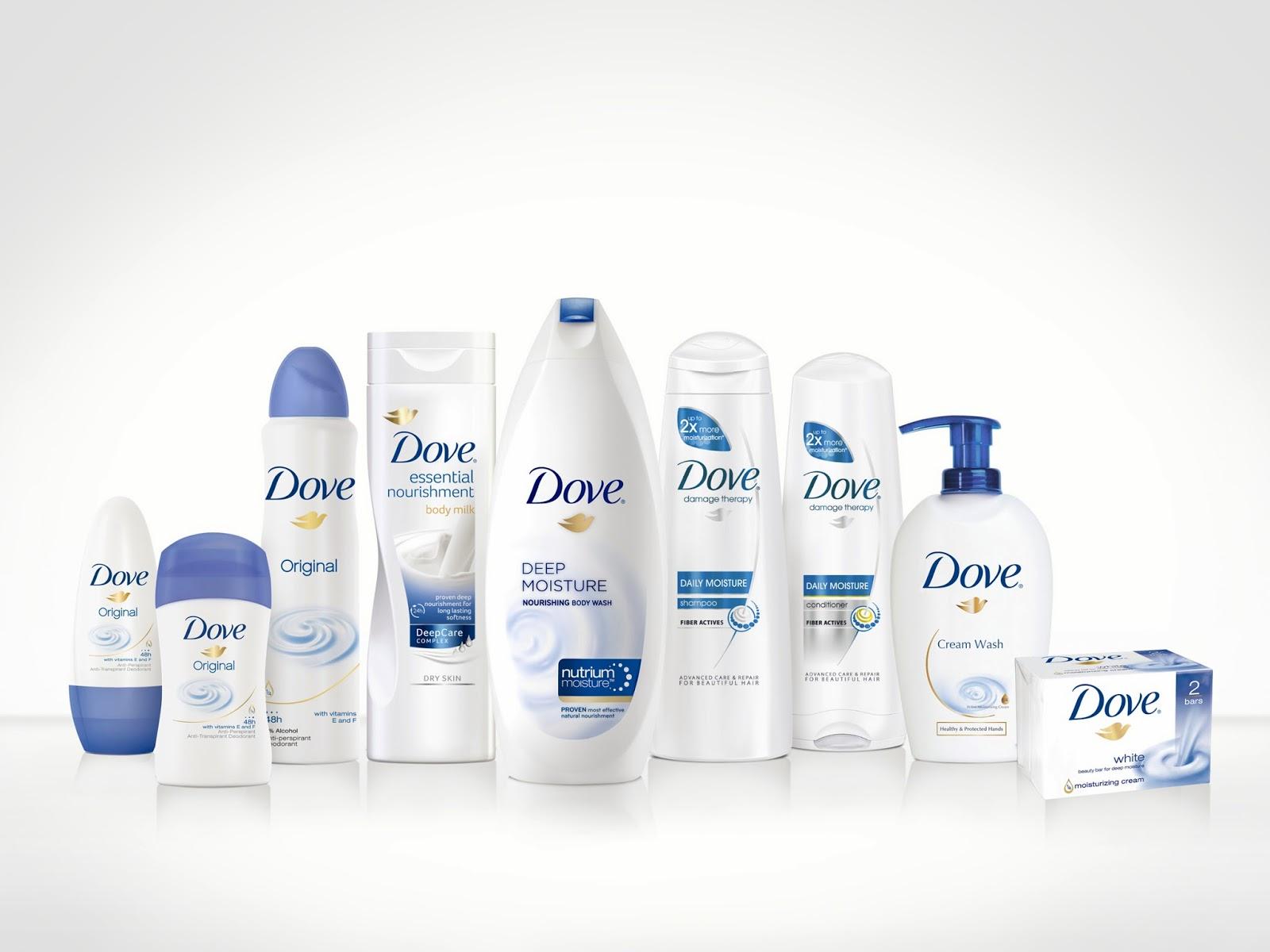
Managing Brand Extensions Without Losing Focus
When expanding your brand, it’s essential to walk the fine line between growth and dilution. Successful brand extensions can lead to an enriched brand equity, but if not managed carefully, they may confuse or alienate your existing customers. To avoid losing focus, consider implementing a strategic approach that keeps the core identity of your brand intact while exploring new avenues.
Start by establishing a clear brand vision that serves as your guiding star. This vision should be reflected in every extension you pursue. Ask yourself:
- Does this extension align with our core values?
- Will it resonate with our target audience?
- How does it enhance our existing offerings?
Next, conduct thorough market research before launching an extension. Understanding your audience’s perceptions and preferences will help you gauge whether your new direction is in line with their expectations. Utilize focus groups or surveys to gather feedback on potential extensions. A well-informed decision is less likely to stray off course.
Another vital step is to maintain a coherent brand narrative. Your story should remain consistent across all platforms and relate to each extension you introduce. For instance, if your brand is known for sustainability, all new products or services must embody this principle. Inconsistency can lead to brand confusion, ultimately diluting your message.
It’s also beneficial to establish a dedicated team for brand management. They can oversee the development and implementation of any new extensions, ensuring that every move stays true to the brand’s core values. This team should be tasked with regular evaluations of brand health to address any potential dilution threats proactively.
Consider creating a framework for evaluating potential extensions, which can include:
| Criteria | Description |
|---|---|
| Relevance | Does it appeal to our existing customer base? |
| Compatibility | Does it align with our core brand identity? |
| Market Demand | Is there a significant customer need or gap in the market? |
| Value Addition | Will it enhance our current offerings? |
monitor the performance of your brand extensions closely. Use analytics tools to track customer engagement, sales figures, and brand perception over time. If certain extensions don’t perform as expected, be prepared to pivot or even retract them. Quick action can help mitigate risks of dilution and keep your brand focused and strong.
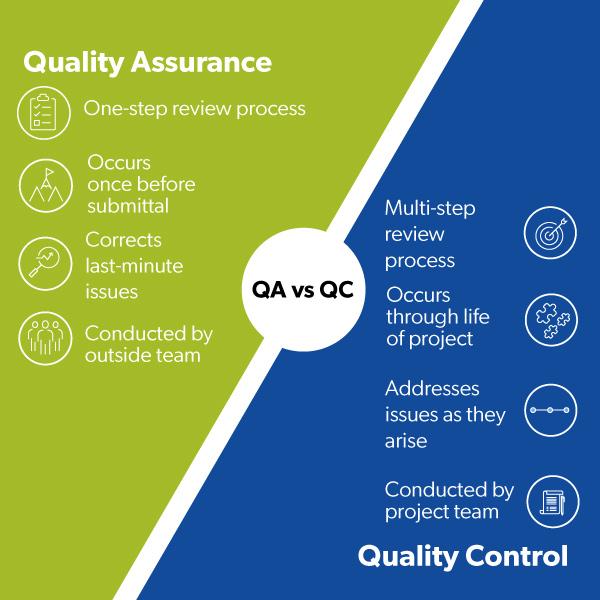
Maintaining Quality Across Products and Services
In the quest for growth and expansion, many brands inadvertently compromise the very essence that made them successful in the first place: quality. Whether it’s a new product line or an additional service, maintaining consistency across offerings is essential to prevent brand dilution. When consumers perceive variations in quality, it can lead to confusion and distrust, ultimately tarnishing the brand’s reputation.
To ensure that every product or service embodies the same standard of excellence, consider implementing the following strategies:
- Clear Guidelines: Establish clear quality standards and guidelines for all teams involved in product or service development. This alignment fosters a unified approach to maintaining excellence.
- Regular Training: Invest in regular training sessions for employees, ensuring they are well-versed in the brand’s values and quality expectations.
- Customer Feedback: Actively seek customer feedback to understand their experiences. This information is vital for identifying areas of inconsistency and opportunities for improvement.
- Consistent Branding: Ensure that all marketing materials, packaging, and communications reflect the brand’s identity consistently. Visual and tonal discrepancies can confuse consumers about the brand’s core message.
Moreover, maintaining quality isn’t just about the product; it’s also about the overall customer experience. Every interaction a consumer has with the brand needs to reflect its commitment to quality. Here are some ways to enhance the customer experience:
- Responsive Customer Service: A responsive and knowledgeable customer service team can significantly enhance the customer journey, instilling confidence in the brand.
- Clear Communication: Providing transparent information about products and services, including their benefits and limitations, helps set realistic expectations.
- Consistent Delivery: Ensure that the quality of customer service remains consistent across all channels, whether online or offline.
To further illustrate the impact of quality maintenance, consider the following table that highlights common pitfalls and their consequences:
| Pitfall | Consequence |
|---|---|
| Inconsistent Product Quality | Loss of customer trust and loyalty |
| Poor Customer Service | Negative brand perception |
| Vague Branding | Confusion among target audience |
| Neglecting Feedback | Missed opportunities for improvement |
By prioritizing quality across all aspects, brands can not only prevent dilution but also foster a loyal customer base that champions their offerings. Remember, every product and service should be a testament to what the brand stands for. When consumers see that commitment, they are more likely to remain engaged and confident in their choices.

Building a Resilient Brand in a Competitive Market
In today’s fast-paced and highly competitive marketplace, maintaining a strong brand identity is essential for long-term success. Businesses must navigate challenges that can lead to brand dilution, which occurs when a brand’s unique qualities and values become less distinct. This not only confuses consumers but can also diminish brand loyalty and weaken market position.
Recognizing the signs of brand dilution is the first step towards building resilience. Some common indicators include:
- Inconsistent Messaging: If your marketing materials convey different messages, your audience may struggle to understand what your brand represents.
- Decreased Customer Engagement: A drop in social media interaction or website traffic can signal that your brand is failing to resonate with consumers.
- Negative Public Perception: Any backlash or unfavorable reviews could indicate that your brand image is being compromised.
Understanding the underlying causes of brand dilution can empower businesses to make informed decisions. Some contributing factors include:
- Overextension: Expanding your product line too quickly without maintaining quality can confuse customers about what your brand stands for.
- Inadequate Market Research: Failing to understand your target audience can lead to misaligned branding strategies that don’t meet consumer needs.
- Neglecting Core Values: Straying from your brand’s foundational principles can dilute its essence, making it less appealing to loyal customers.
To prevent brand dilution, organizations must adopt a proactive approach. Here are some strategies to consider:
- Maintain Consistency: Ensure that all marketing and communication channels reflect the same message, tone, and visual identity.
- Engage with Your Audience: Use social media and surveys to gather feedback and understand consumer perceptions, allowing you to fine-tune your approach.
- Focus on Quality: Prioritize product and service excellence to reinforce your brand’s reputation and reliability.
Implementing a clear brand strategy can help in reinforcing your identity and preventing dilution. Consider the following table for a quick reference on effective brand strategies:
| Brand Strategy | Description |
|---|---|
| Brand Guidelines | Document your brand’s voice, visual elements, and messaging to maintain consistency. |
| Customer Experience | Map the customer journey and ensure a seamless experience across all touchpoints. |
| Regular Audits | Periodically evaluate your brand’s performance and adjust strategies based on consumer feedback. |
In essence, a resilient brand is one that remains true to its core values while adapting to market changes. By staying vigilant and proactive, businesses can safeguard their brand identity against dilution and strengthen their competitive edge. The journey may be challenging, but the rewards of a solid brand reputation and customer loyalty are undeniably worth the effort.
Case Studies: Brands That Overcame Dilution Challenges
Brand dilution can seem like an insurmountable obstacle, but several brands have successfully navigated these challenges. Let’s explore some of their strategies and insights that could serve as inspiration for others facing similar issues.
1. Coca-Cola: Reinventing Classics
Coca-Cola faced significant dilution in the 1980s and 1990s when numerous competitors entered the market. To combat this, they launched a campaign to revitalize their core product. They executed the following strategies:
- Product Focus: Coca-Cola emphasized its classic beverage, reminding consumers of its original taste.
- Marketing Campaigns: Engaging advertisements highlighted the brand’s heritage and emotional connection with customers.
- Limited Editions: They introduced limited-edition flavors while ensuring the classic formula remained at the forefront.
2. Apple: Maintaining Exclusivity
Apple has consistently battled brand dilution as it expanded its product line. The tech giant addressed this challenge by:
- Clear Brand Messaging: Apple ensures all marketing materials reflect its core values of innovation and user experience.
- Selective Product Launches: New products are introduced strategically to reinforce the brand’s premium image.
- Customer Engagement: They cultivate a loyal customer base through personalized experiences and exclusive events.
3. Starbucks: From Coffee to Lifestyle Brand
As Starbucks ventured beyond coffee into food and merchandise, concerns about brand dilution arose. Their solution included:
- Quality Control: Starbucks maintained strict standards for all products to ensure they met brand expectations.
- Community Building: Creating an inviting atmosphere in stores that promotes a lifestyle, not just a beverage.
- Innovative Marketing: Using social media and customer feedback to tailor offerings and engage directly with consumers.
4. Nike: The Power of Purpose
Nike has faced backlash due to perceived brand dilution through extensive collaborations and endorsements. To counteract this, they focused on:
- Authenticity: Aligning with athletes and causes that resonate with their core values, showcasing a commitment to social issues.
- Brand Community: Creating a sense of belonging through initiatives like Nike Run Club and various sports events.
- Innovative Product Lines: Keeping their product lines distinct and targeting specific audiences without losing sight of their core brand identity.
5. LEGO: Rebuilding Brand Value
After facing a decline in relevance, LEGO implemented several strategies to overcome brand dilution:
- Consumer Engagement: Actively involving fans in product development through platforms like LEGO Ideas.
- Collaborations: Partnering with popular franchises like Star Wars and Harry Potter to attract a wider audience.
- Reinforcing Core Values: Emphasizing creativity and education in their marketing campaigns, steering back to their origins.
These case studies highlight that overcoming brand dilution is not only possible but can also lead to stronger brand loyalty and recognition. By focusing on core values, maintaining quality, and engaging authentically with consumers, brands can successfully navigate these challenges and emerge even more powerful.
Future-Proofing Your Brand Against Dilution Risks
To safeguard your brand from dilution risks, it’s essential to adopt a proactive approach that not only anticipates potential threats but also fortifies your brand’s identity in the market. Here are some effective strategies to consider:
- Consistent Messaging: Ensure that your brand messaging is clear and consistent across all platforms. This includes your website, social media, and advertising campaigns. Inconsistency can confuse customers and weaken brand recognition.
- Strong Visual Identity: Develop a recognizable visual identity that encapsulates your brand’s essence. This includes your logo, color palette, and typography. A cohesive visual identity helps reinforce brand recognition.
- Engage with Your Audience: Foster a direct relationship with your customers through interactive content, feedback opportunities, and responsive communication. Engaged customers are more likely to remain loyal and advocate for your brand.
- Monitor Brand Health: Regularly assess your brand’s performance through surveys, social media listening, and analytics. This will help you identify any shifts in perception or loyalty before they escalate into dilution.
Additionally, it’s crucial to be mindful of your brand’s expansion strategies. While diversification can be beneficial, introducing products or services that stray too far from your core identity can dilute your brand’s impact. Here’s how to expand wisely:
| Expansion Strategy | Potential Risk | Mitigation Approach |
|---|---|---|
| New Product Lines | Brand Confusion | Ensure alignment with core values. |
| Entering New Markets | Loss of Identity | Conduct thorough market research. |
| Collaborations | Negative Associations | Choose partners who align with your values. |
fostering a culture of innovation within your organization can help continuously refresh your brand without losing its core identity. Encourage creative thinking and be open to feedback from employees and customers alike. This collaborative environment can lead to innovative solutions that keep your brand relevant and competitive.
In essence, future-proofing your brand against dilution requires vigilance, adaptability, and a deep understanding of your audience. By implementing these strategies and maintaining a strong foundation, you can ensure your brand not only survives but thrives in an ever-evolving marketplace.
Frequently Asked Questions (FAQ)
Q&A: What is Brand Dilution? Signs, Causes (And How to Prevent It)
Q1: What exactly is brand dilution?
A1: Brand dilution happens when a brand loses its unique identity, strength, or value in the eyes of consumers. It can occur when a brand expands too rapidly, introduces products that don’t align with its core message, or spreads itself too thin in different markets. Basically, it’s when your brand starts blending in with the crowd instead of standing out.
Q2: Why should I care about brand dilution?
A2: You should definitely care! Brand dilution can weaken your market position, making it harder to attract and retain loyal customers. When your brand loses its distinctiveness, it can lead to decreased sales and even harm your reputation. Think about it: consumers are more likely to choose a brand they trust and recognize. You want your brand to be that choice!
Q3: What are some signs that my brand might be experiencing dilution?
A3: Great question! Here are a few signs to watch out for:
- Loss of Recognition: If customers can’t easily identify your brand or confuse it with competitors, that’s a red flag.
- Mixed Messaging: If your marketing campaigns are sending out inconsistent or unclear messages, it might confuse consumers about what you stand for.
- Decreased Customer Loyalty: If your loyal customers start wandering off to competitors, it could signal brand dilution.
- Poor Product Performance: If new products or extensions aren’t performing well or align with your brand’s core values, it indicates dilution.
Q4: What causes brand dilution?
A4: There are several culprits behind brand dilution:
- Over-Extension: Launching too many products in unrelated categories can confuse customers about your brand identity.
- Inconsistent Branding: Failing to maintain a consistent look, feel, and message across all platforms can dilute your brand.
- Poor Quality Control: If your brand starts offering subpar products or services, it can damage your reputation and lead to dilution.
- Market Saturation: If you’re entering a highly competitive market without a unique angle, it’s easy to get lost in the noise.
Q5: How can I prevent brand dilution?
A5: Prevention is key! Here are some effective strategies:
- Stay True to Your Core Values: Always align your products and marketing efforts with the essence of your brand. Keep your messaging consistent!
- Conduct Market Research: Regularly gather feedback from your customers to ensure your brand is resonating with them.
- Limit Product Extensions: Be strategic about diversifying your offerings. Ensure that any new products genuinely contribute to your brand and enhance its value.
- Maintain High Standards: Quality is paramount. Always uphold the quality of your offerings to keep customer trust intact.
- Monitor Your Brand’s Health: Regularly review your brand’s performance and perception in the market to catch signs of dilution early.
Q6: Can brand dilution ever be reversed?
A6: Yes, it can be! While it may take some time and effort, you can rebuild your brand. Start by revisiting your brand strategy, refocusing on your core values, and communicating clearly with your audience. Rebranding or repositioning may also help, but remember, consistency is key in regaining consumer trust!
Q7: Any final thoughts for business owners?
A7: Absolutely! Being proactive about your brand’s identity is crucial. Keep your finger on the pulse of your market and your customers. After all, your brand is more than just a logo or a product; it’s the promise you make to your customers. Protect it like the valuable asset it is!
The Way Forward
As we wrap up our deep dive into brand dilution, it’s clear that this is a topic every business owner and marketer should keep in their back pocket. By being aware of the signs, understanding the causes, and taking proactive steps to prevent it, you can safeguard your brand’s integrity and ensure its long-term success. Remember, your brand is more than just a logo or a catchy slogan—it’s the essence of who you are and what you stand for.
So, take a moment to evaluate your brand strategy. Are you spreading your message too thin? Are you straying from what makes your brand unique? If so, it might be time for a reevaluation. Stay true to your core values, maintain consistency across your platforms, and keep your audience engaged with authentic messaging.
By being vigilant and intentional about your branding efforts, you can not only avoid dilution but also strengthen your connection with your audience. After all, a strong brand doesn’t just survive— it thrives! If you found this article helpful, don’t hesitate to share it with others who might benefit. Let’s keep the conversation going and help each other build brands that stand the test of time!






